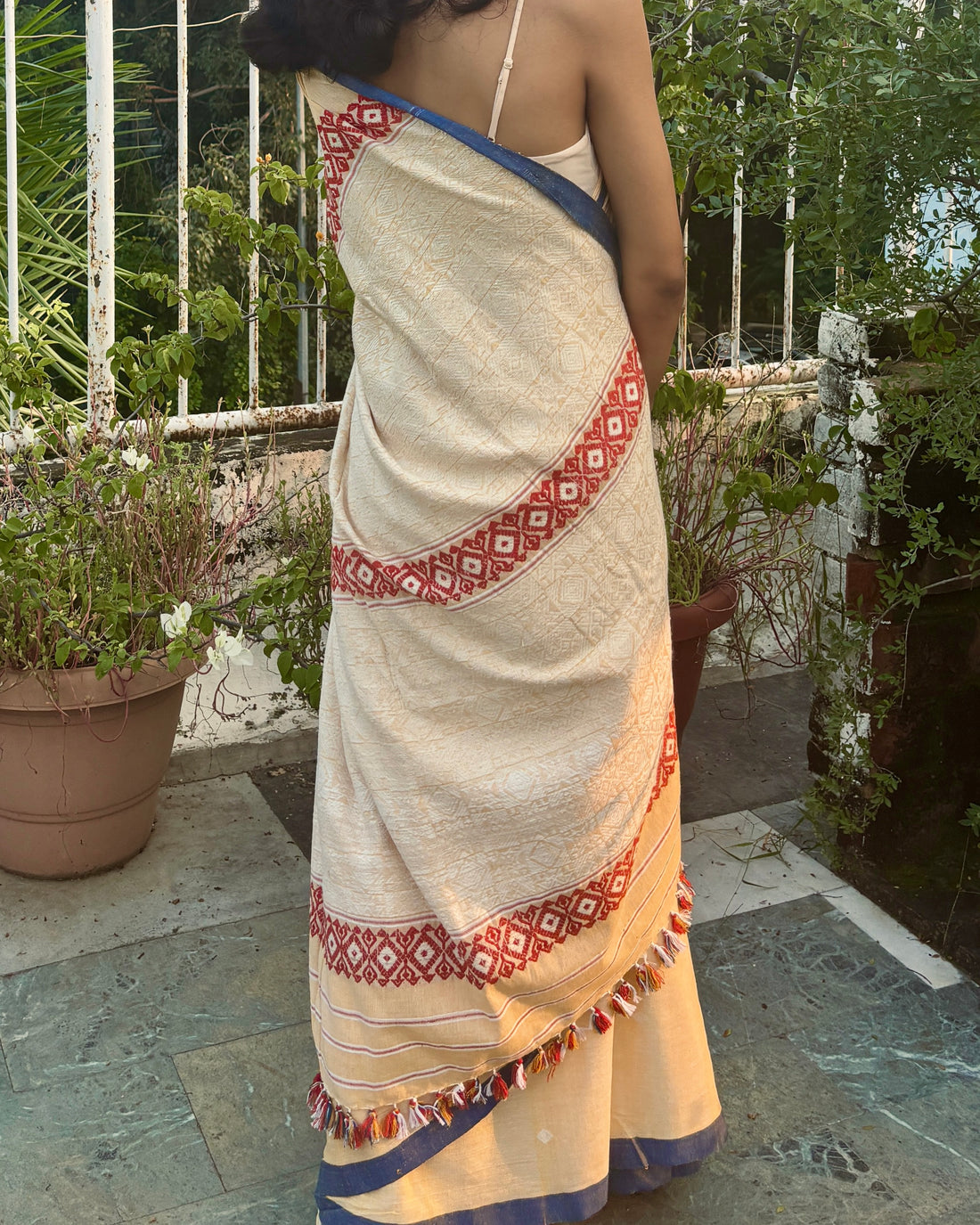
The Story Behind Assamese Motifs: Celebrating Culture and Tradition
Share
Every design has a story to tell. Our handcrafted motifs take inspiration from the cultural heritage and of Assam- traditional patterns and symbols passed down through generations. From the intricate floral designs that represent the beauty of nature to the geometric patterns inspired by tribal art, each motif reflects the history, beliefs, and way of life of the local communities. These unique designs are not just decorations but a tribute to the artisans and their cultural heritage.
The Influence of Nature
Much of our work is inspired by the surrounding environment in Assam and the broader Northeast region. Floral motifs such as the Kopou phool (foxtail orchid), which holds deep significance in Assamese culture, often adorn our designs. The kopou flower blooms once a year during Rongali Bihu, the official start of the New Year (and spring season) and represents fertility and growth, making it a perfect fit for celebrations and new beginnings. Our weavers skillfully incorporate this beautiful motif into sarees, Mekhela Sadors, and shawls, preserving this symbolism in wearable art. We also use this motif on our hand block printed creations.
Animal Motifs
Animal motifs have long been a central part of Assamese textile designs, symbolising a deep connection with nature. Creatures like the elephant, peacock, and lion frequently appear in traditional weaves, each representing different cultural and spiritual meanings. The peacock often symbolises beauty and grace, while the elephant signifies strength and prosperity and the lion symbolising strength and power.
Tribal Art and Geometric Designs
Tribal communities across Northeast India have long used geometric patterns in their textiles to represent life’s balance and harmony. Our motifs pay homage to these traditional designs, blending them with contemporary aesthetics to create pieces that speak to both modern and traditional sensibilities. The repetitive geometric patterns are meticulously handwoven, reflecting the time and care put into each creation.
Some recurring motifs that can be found in handloom fabrics from Assam are the following:
The ‘Kinkhap’ Motif
The Assamese Kinkhap motif is rooted in the opulent heritage of Mughal influence of using gold & silver threads on Assam’s weaving traditions. This luxurious design inspired by royal attire of the Ahom kingdom features intricate two lions facing each other amidst floral patterns. Historically, kinkhap was used in garments worn by royalty or during special ceremonies, symbolising wealth and grandeur.
The ‘Gos’ Motif
The Gos motif is a traditional Assamese pattern inspired by trees and foliage, representing nature’s abundance. "Gos" translates to "tree" in Assamese, and the design often showcases geometric lines that mimic the branches and leaves of a tree with a pair of birds sitting underneath. This motif is an ode to nature and its creations.
The ‘Bisoni’ Motif
The Bisoni motif is another important Assamese design, known for its graceful depiction of the hand fan (bisoni). Traditionally, the hand fan is a popular item used by Assamese folk to fan themselves, the motif has evolved into an intricate design element in textiles. It is often featured on sarees and Mekhela Sadors as a symbol of grace and beauty.
The ‘Kolki’ Motif
Known for its distinct teardrop or mango shape, the Kolki motif also known as the Paisley motif has its roots in Persian design, brought to Assam through trade routes and cultural exchanges. It represents a stylised floral pattern, often seen as a teardrop shape with a curved upper end, symbolising fertility, life, and eternity.
The 'Parbati' Motif
This motif features stylised representations of hills and valleys, inspired by the local geography. The Parbati motif is often utilised at the borders and edges of Assamese textiles, enhancing the visual appeal while mirroring the enduring beauty of Assam's hills.
The motifs used in Assamese textiles are more than just decorative elements—they are reflections of the region's rich cultural heritage, history, and connection to nature. From the regal Kinkhap to the nature-inspired Gos and symbolic Kolki motifs, each design carries its own unique story and significance. These handcrafted patterns have been passed down through generations, blending tradition with modern fashion. By incorporating these motifs, Arras not only celebrates Assam’s artistry but also supports the preservation of this cultural legacy in every piece of fabric.




